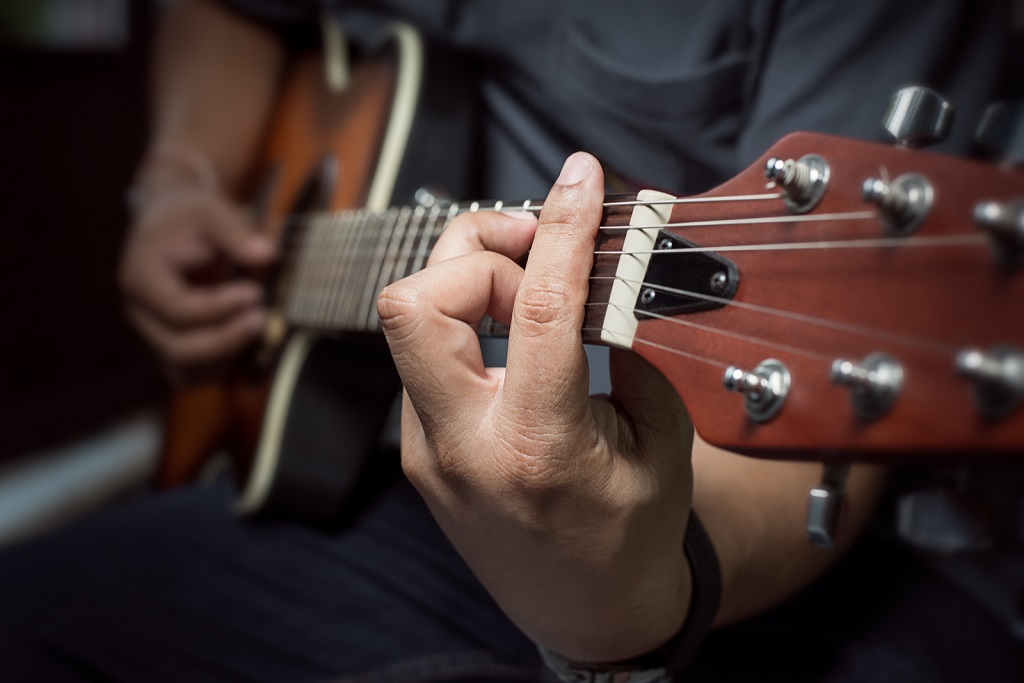
05 Sep How to Play a Guitar for Beginners: A Step-by-Step Guide
Learning to play the guitar can be an exciting and rewarding journey, whether you aspire to strum along to your favorite songs or dream of becoming a rockstar. While it might seem daunting at first, with the right guidance and practice, you’ll be playing chords and melodies in no time. In this article, we’ll walk you through the essential steps on how to play a guitar for beginners.
Hitting the Right Chords: Guitar Basics for Beginners
1. Choosing the Right Guitar
When it comes to playing guitar, it’s crucial to select the right one. Depending on your preference, you may want to decide between an acoustic or electric guitar. Factors like comfort, genre preference, and budget should all be taken into consideration. Additionally, if you’re using change tempo pro tools to record your music, you might want to know how to change to get the perfect sound.
2. Understanding the Guitar’s Anatomy
Familiarize yourself with the various parts of a guitar, from the headstock to the bridge. Knowing these components will help you navigate your instrument with confidence.
3. Tuning Your Guitar
Learn how to tune your guitar properly using a tuner or by ear. A well-tuned guitar is essential for producing pleasant sounds.
4. Mastering Proper Posture and Hand Placement
Achieve comfort and optimal sound production by adopting the correct posture and hand positioning. This foundation will enhance your playing technique.
Strumming the Right Way: Basic Techniques
5. Holding the Pick
Explore different ways to hold a pick and discover which technique suits your style. Experimentation is key to finding your preferred method.
6. Basic Strumming Patterns
Start with simple strumming patterns to develop rhythm and coordination. Focus on down-strokes and up-strokes before progressing to more complex patterns.
7. Playing Open Chords
Master fundamental open chords like C, G, D, and E minor. Practice transitioning between these chords smoothly to play basic songs.
8. Learning Basic Scales
Introduce yourself to basic scales such as the pentatonic scale. Scales are the building blocks of melodies and solos. Discover THE 6 BEST APPS FOR FINDING NEW MUSIC.
Navigating the Fretboard: Progressing to Intermediate
9. Barre Chords Demystified
Unlock the world of barre chords, which enable you to play a variety of chord shapes up and down the fretboard. Patience and practice are key here.
10. Exploring Different Strumming Techniques
Dive deeper into strumming techniques, including palm muting, fingerpicking, and arpeggios. These techniques add depth and variety to your playing.
11. Introduction to Music Theory
Grasp the basics of music theory, such as scales, chords, and chord progressions. This knowledge will empower you to create your own music.
Rocking Your Skills: Advanced Guitar Techniques
12. Playing Melodies and Solos
Combine your knowledge of scales and techniques to start playing melodies and simple solos. Express yourself through your guitar playing.
13. Fingerstyle Mastery
Delve into the art of fingerstyle playing, allowing you to create intricate and beautiful arrangements without a pick.
14. Advanced Chord Progressions
Explore more complex chord progressions and experiment with different voicings to add sophistication to your playing.
15. Developing Your Unique Style
As you gain proficiency, focus on developing your unique playing style. Draw inspiration from your favorite artists while incorporating your creativity.
Conclusion
Embarking on the journey of learning to play the guitar requires dedication, practice, and a love for music. Remember that progress takes time, so be patient with yourself. Whether you’re strumming around a campfire or performing on stage, playing the guitar is a fulfilling and enriching skill that will stay with you for a lifetime.
FAQs about Learning to Play the Guitar
Q1: How often should I practice to improve my guitar skills?
Consistent practice is key. Aim for at least 30 minutes to an hour of focused practice each day.
Q2: Can I learn to play the guitar without taking formal lessons?
Yes, there are plenty of online resources and tutorials available. However, formal lessons can provide structured guidance and feedback.
Q3: What are some easy songs to play as a beginner guitarist?
Songs like “Wonderwall” by Oasis or “Knocking on Heaven’s Door” by Bob Dylan feature simple chord progressions and are great for beginners.
Q4: Do I need to learn music theory to play the guitar?
While not mandatory, a basic understanding of music theory can significantly enhance your playing and songwriting abilities.
Q5: How do I prevent finger soreness while practicing?
Initially, your fingers might get sore. Gradually build up calluses by practicing regularly and taking short breaks to avoid overstraining.




